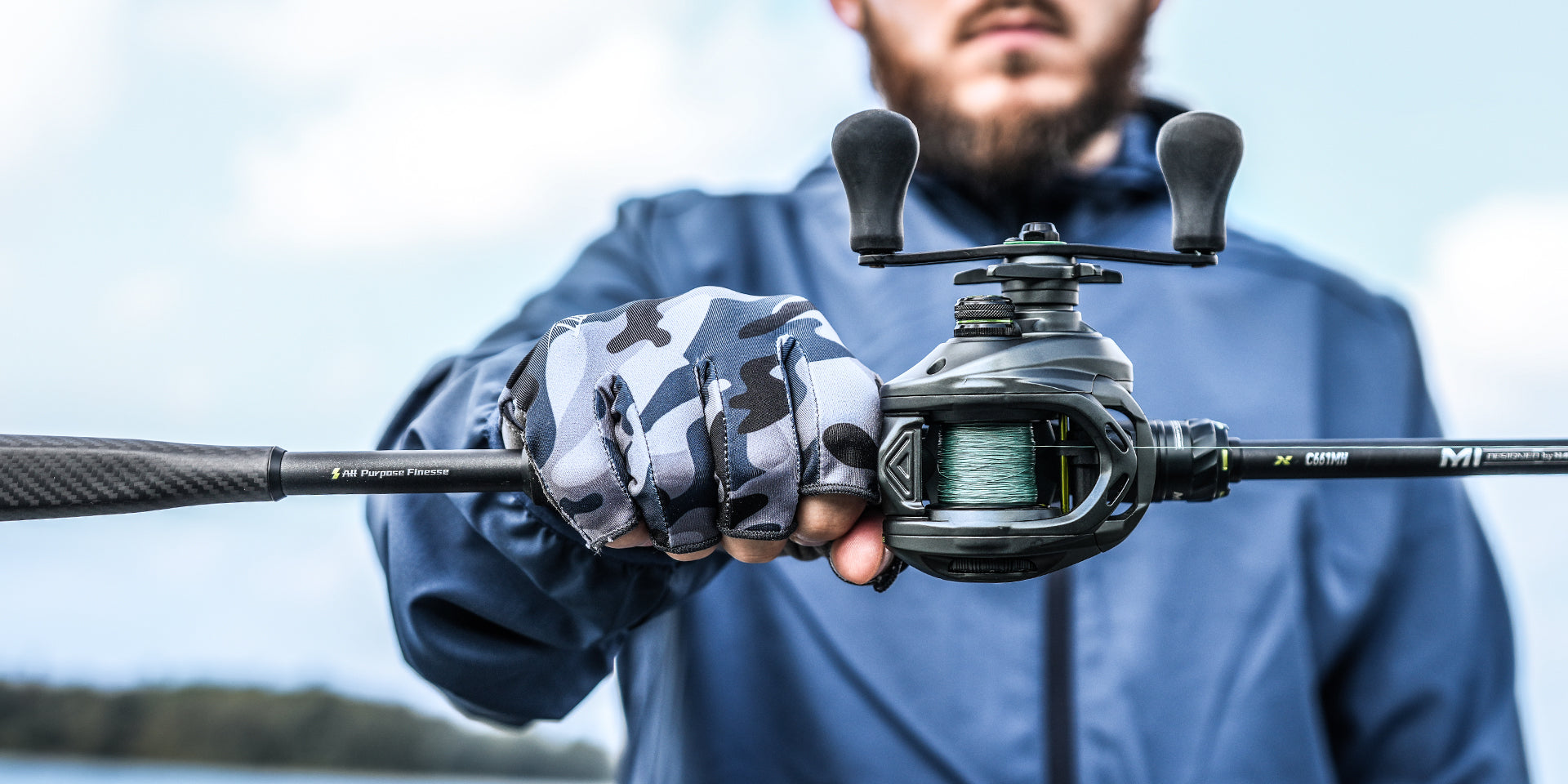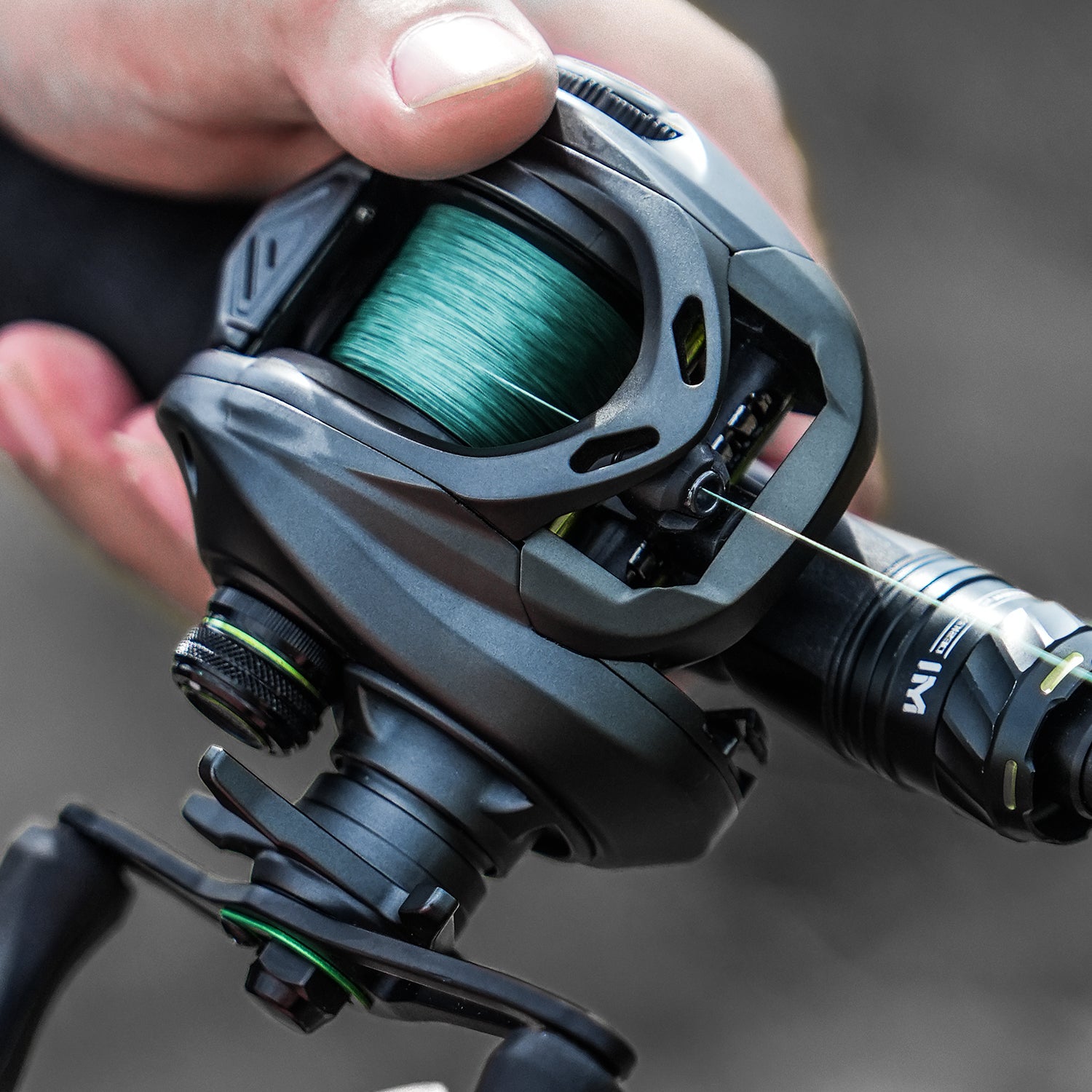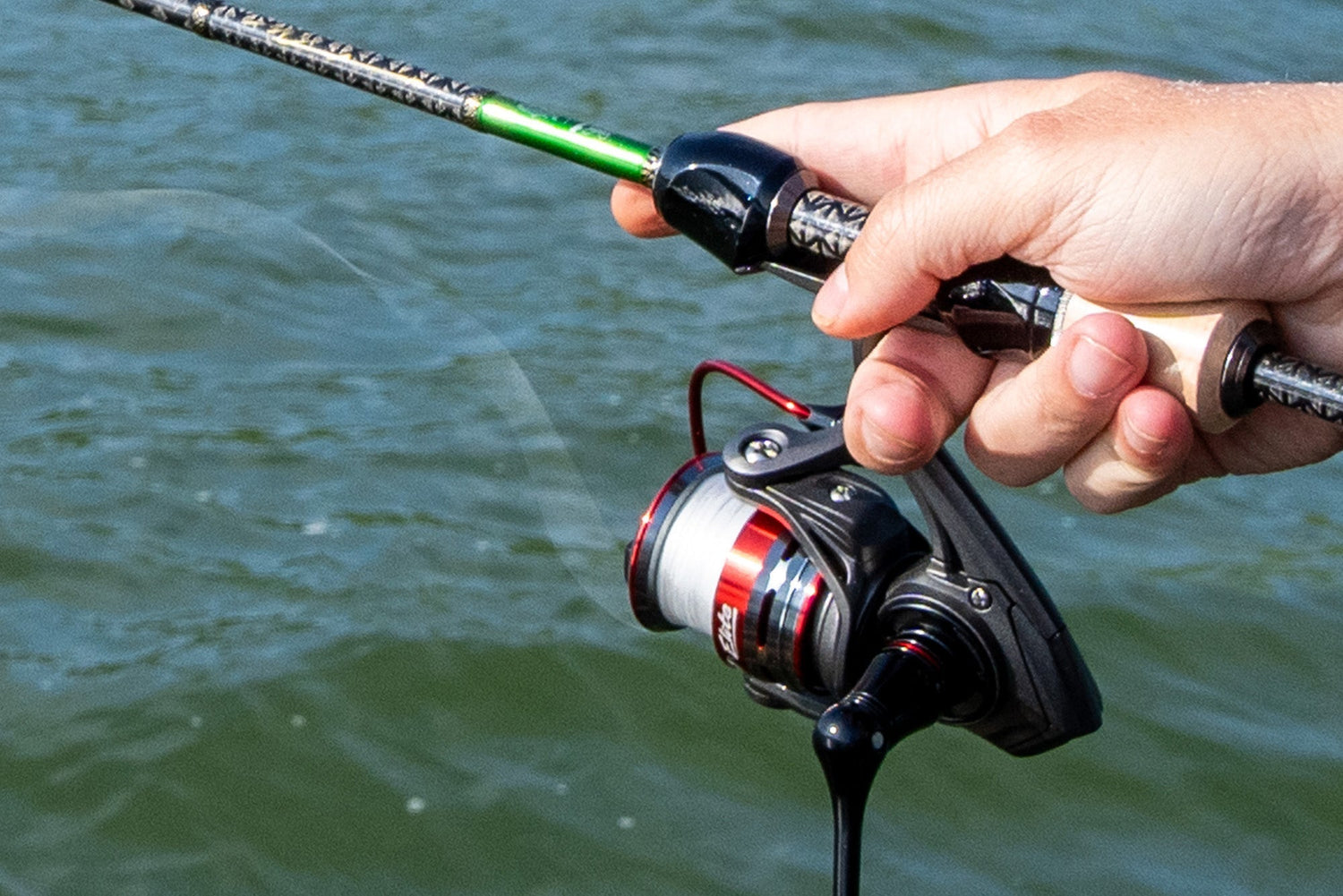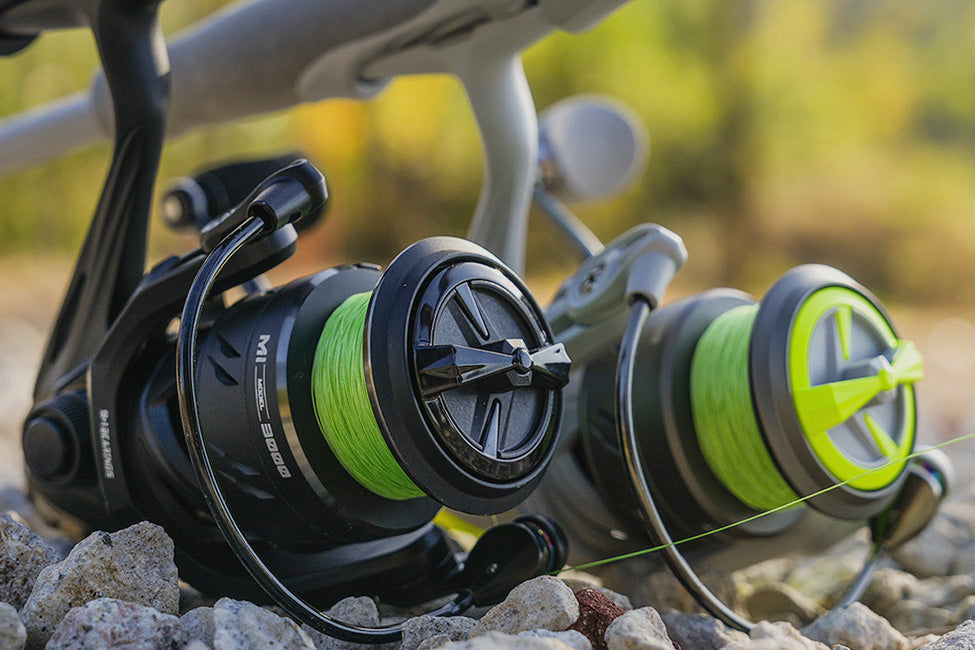Nothing ruins a perfect fishing day faster than constantly battling twisted, tangled line. Line twist plagues anglers at every skill level, turning what should be relaxing into pure frustration. Whether you're using a spinning fishing reel or baitcaster, twisted line reduces casting distance, creates knots, and can cost you that trophy catch. This guide will help you tackle line twist problems with proven techniques that actually work.
What Causes Line Twist?

Spinning Reels – The Usual Suspect
Spinning reels are well-known for causing line twist because of how they're made. When you cast, the line comes off a spool that doesn't move, creating loops. Each loop puts a half-twist in the line. When you reel it back in, the bail spins around the spool, adding even more twist each time you turn the handle. Despite this tendency toward line twist, spinning reels remain among the most popular and easiest to use fishing reels for beginners.
The problem gets worse if you put too much line on your reel. When the spool is too full, the line loops up loosely and gets tangled easily. On the other hand, if you don't put enough line on, you won't be able to cast as far, and the line won't behave correctly.
Also, many people don't realize that when you're putting new line on your reel, it needs to come off the filler spool the same way it's going onto the reel. If you do it backward, you'll twist the line even more.
Other Types of Reels
Baitcasting reels have different issues. They don't usually cause twist like spinning reels do, but backlashes (when the line gets tangled up) can lead to line problems if you're not careful. The line guide on most baitcasters helps spread the line out evenly, which reduces problems.
Fly reels almost never have twist problems because you pull the line in by hand instead of winding it onto the reel.
How to Prevent Line Twist with Spinning Reels: 3 Tips
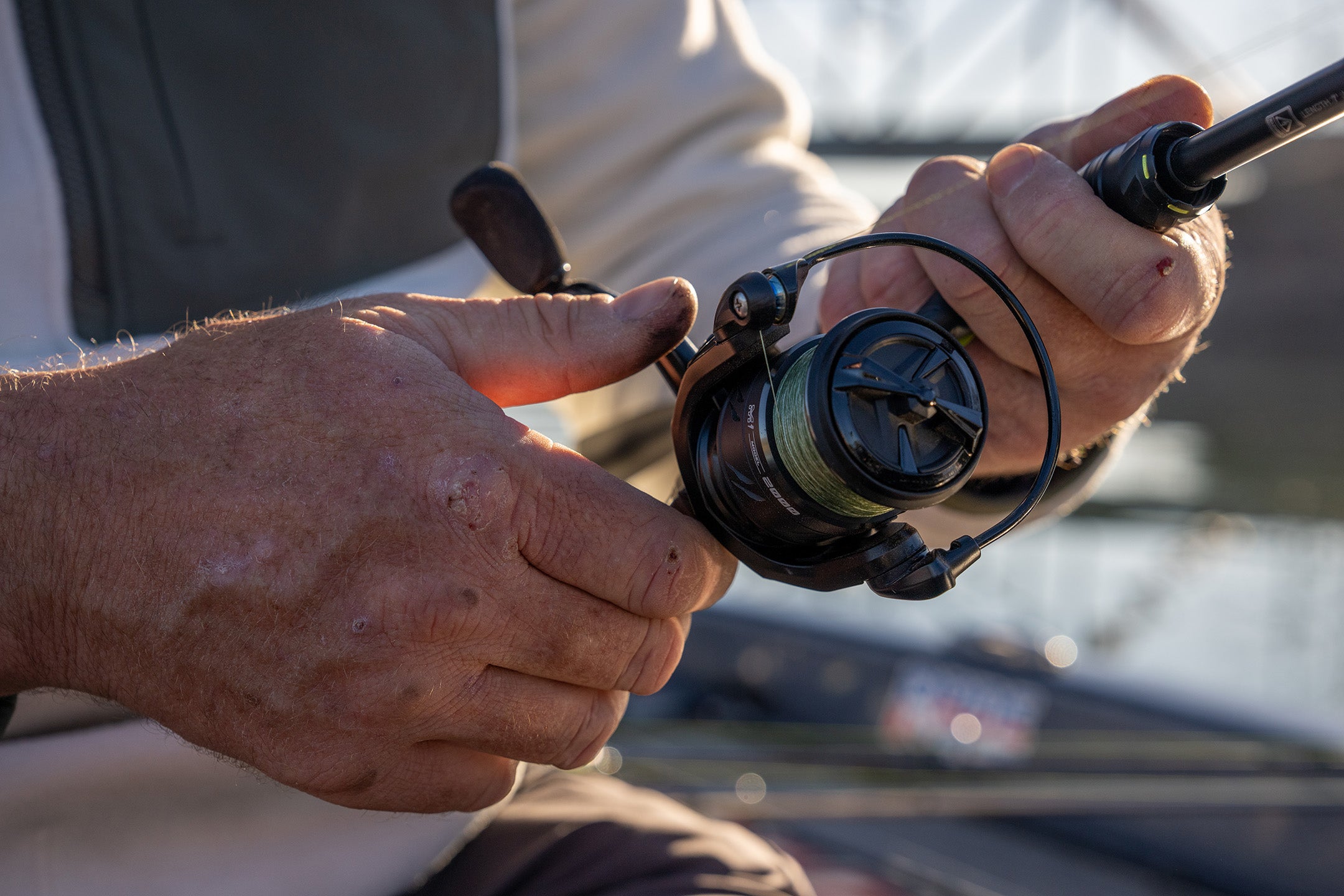
1. Spool the Line Correctly
The best way to prevent line twist starts right when you put new line on your reel. Lay the spool of new line flat on the ground with the label facing up. Thread the line through all your fishing rod guides and tie it to the reel. Get someone to hold a pencil through the spool, or grab a spooling station if you've got one handy.
While the line feeds onto your reel, pinch it lightly with a damp cloth. This keeps everything snug so you won't deal with tangles later. Every 20-30 yards, stop and let a few feet of line dangle free to check for twist. If it starts coiling up on itself, just flip that spool over.
Fill your spool until there's about an eighth of an inch from the rim. That's the sweet spot for long casts without getting loopy, tangled messes.
2. Choose the Right Line
Different lines act completely different on spinning reels. Monofilament has memory – it wants to stay in whatever shape it was wound. Fluorocarbon does the same thing but fish can't spot it as easily underwater. Braided lines don't have that memory problem, but they'll dig into themselves if you crank them down too tight. Understanding the types of fishing line and their properties is essential for preventing line twist issues.
Here's a smart trick: even if you're running braided main line, add a mono or fluoro leader. You get the best of both worlds while cutting down on twist issues.
3. Attach Quality Swivels When Needed
Install quality ball-bearing swivels to cut down on line twist, especially with lures that love to spin while you're reeling. But swivels aren't some magic fix-all. They add extra hardware that might spook wary fish, and they can fail right when you need them most.
Save swivels for when they actually make sense – spoons, inline spinners, and other lures that naturally want to rotate. Skip them with jigs, soft plastics, or topwater baits where that extra hardware might mess with the lure's action. The key is knowing when that swivel helps versus when it just gets in the way.
2 Prevention Methods for Other Fishing Reels

1. Prevent Backlash in Baitcasting Reels
Master proper thumb control to prevent most baitcaster problems. Practice controlling spool speed with your thumb during the cast. Too little pressure creates backlashes; too much kills casting distance. Modern baitcasters feature magnetic or centrifugal braking systems that help, but thumb control remains essential.
Adjust the spool tension knob for different fishing lure weights. Heavier lures need less tension; lighter lures require more. Start tight and gradually loosen until you find the sweet spot for each lure.
2. Keep Your Reels Clean and Maintained
Regular cleaning prevents many reel issues before they start. Salt water is particularly hard on fishing reels, but even fresh water can cause problems over time. Rinse reels with fresh water after each outing and dry thoroughly before storage.
Check that line guides rotate freely. Stuck or damaged guides create friction that translates to line twist and reduced casting performance. A little preventive maintenance goes a long way toward keeping your gear working smoothly.
SOS: Quick Fixes for Existing Line Twist
The Towing Method
If your line is badly twisted, try towing it behind a boat. Remove all your fishing gear from the line and let it drag in the water as the boat moves. The water will naturally untwist the line. You can also do this in a strong current from the shore – just walk into the water and let the current do the work.
Be careful and don't do this around other boats or in busy areas.
The Hang and Spin Solution
Find a strong tree branch or fence post that's about as high as your head. Tie your line to it and walk backward, letting the line come off the reel. The weight of your fishing gear will help the line untwist. This works well if the line isn't too twisted.
When All Else Fails: The Reset
Sometimes the only thing you can do is start with new line. Take all the line off your reel and put new line on correctly. It takes time, but it's the best way to make sure there's no twist. This is also a good time to check your line for any cuts, scrapes, or weak spots that could cause it to break.
Before you put new line on, clean your reel well. Make sure the bail (the part that goes around the spool) moves smoothly and that the line roller (the part that the line goes over) spins freely. If the line roller is stuck, it will cause a lot of twist every time you cast.
Playing the Long Game: Maintenance and Solutions
Establish a Replacement Schedule
Monofilament degrades from UV exposure, heat, and general use. Replace it at least annually, more often if you fish frequently. Fluorocarbon lasts longer but still needs periodic replacement.
Braided lines can last several seasons but inspect them regularly. Look for fraying, color changes, or rough spots that indicate wear.
Line Conditioners and Storage
Quality line conditioners reduce friction and improve casting performance. They're particularly helpful in cold weather when lines become stiff and memory increases.
Store reels in a cool, dry place away from direct sunlight. Heat and UV rays break down line materials, making them more prone to twist and failure.
Professional Servicing
Consider professional reel servicing annually for heavily used reels. Technicians can identify and fix small problems before they become major issues. They'll also lubricate internal components and replace worn parts that might contribute to line twist.

Start Fishing Twist-Free Today
Line twist doesn't have to ruin your fishing adventures. Proper spooling techniques, appropriate line selection, and regular maintenance prevent most problems before they start. When twist does occur, quick fixes can get you back to fishing without major interruptions. Remember that prevention beats correction every time – invest a few extra minutes in proper setup to save hours of frustration on the water.


